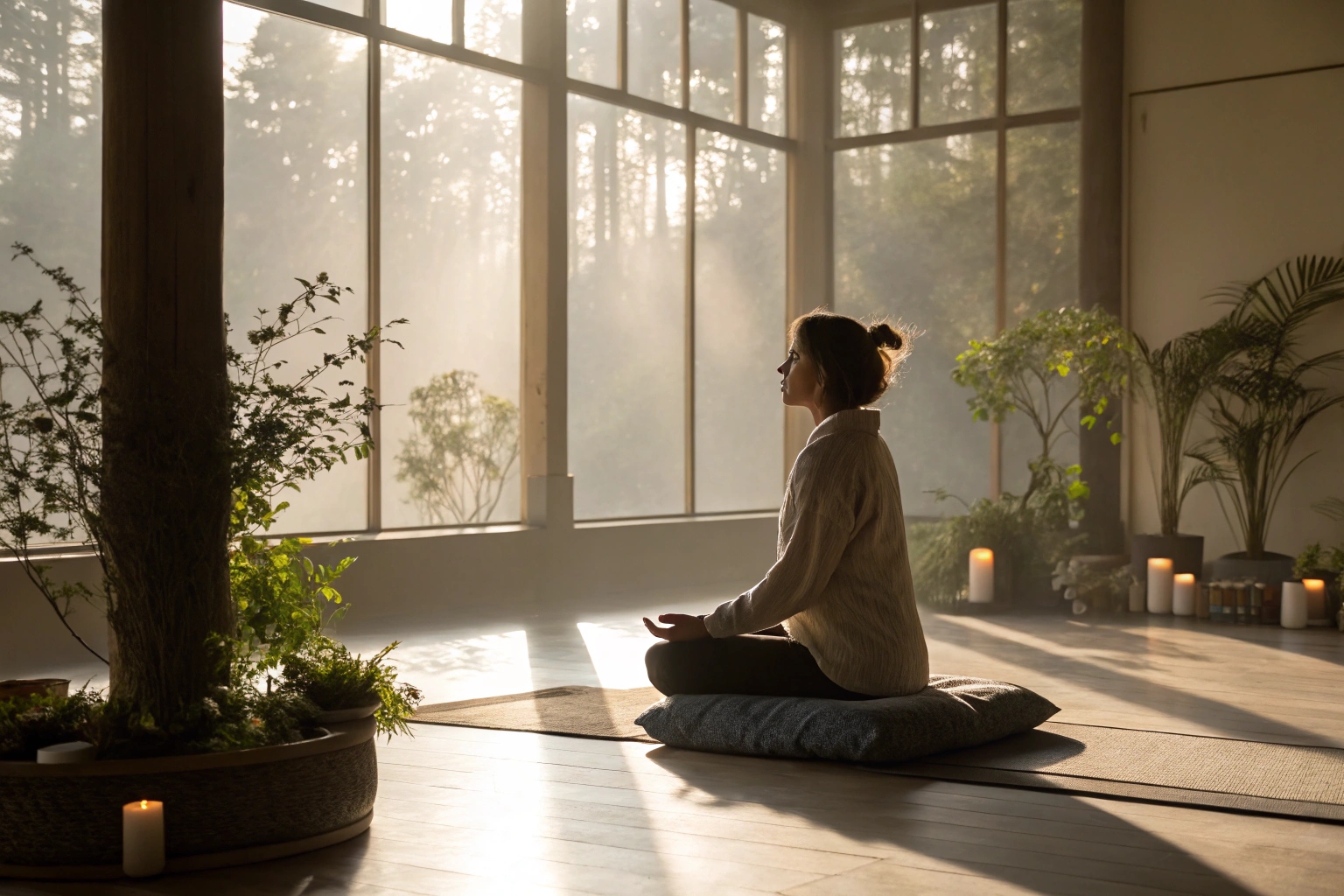Is there a wrong way to meditate?

Meditation is a deeply personal practice, and it can be difficult to define a "wrong" way to meditate. But certain practices may hinder your progress or even cause discomfort.
While meditation is often seen as a personal journey, certain habits or practices can make it less effective or even harmful. Understanding what not to do can enhance your meditation experience.
Let’s dive deeper into some common pitfalls and how to avoid them, ensuring your practice is more beneficial and aligned with your personal needs.
What should you not do during meditation?
It’s easy to get caught up in trying to do everything "right" during meditation, but some practices can actually interfere with your progress.
Common mistakes like forcing uncomfortable positions or pushing too hard for quick results can create physical or mental tension, ultimately disrupting the calming nature of meditation.

One of the most common mistakes is trying to force yourself into a certain posture during meditation. It’s easy to think that you need to sit perfectly still in a challenging pose to experience deep meditation, but forcing yourself into discomfort can cause tension and distract your mind. If your body hurts or feels strained, your mind will likely struggle to focus. This can create a cycle where you are more focused on the discomfort than on your breath or meditation practice itself.
It's crucial to listen to your body during meditation. If sitting cross-legged on the floor is uncomfortable, try sitting on a cushion or chair instead. The goal is to create a stable, comfortable foundation that allows you to focus on your practice, not endure pain. Another common mistake is holding your breath or forcing specific breathing techniques. Breathwork should come naturally, not as a source of stress or control.
Additionally, rushing your meditation can also be counterproductive. Meditation is a process that requires patience and consistent practice. Expecting immediate results, such as instant mental clarity or a profound spiritual experience, can lead to frustration and self-doubt. It’s important to allow your practice to unfold naturally. Meditation is not about forcing outcomes, but about nurturing a space for mindfulness and awareness to grow.
Common Pitfalls to Avoid in Meditation:
| Mistake | Why It’s Harmful | How to Avoid It |
|---|---|---|
| Forcing uncomfortable positions | Discomfort distracts the mind and body | Use cushions or comfortable chairs |
| Rushing for quick results | Creates frustration and self-doubt | Focus on the process, not the outcome |
| Over-controlling your breath | Leads to stress and mental tension | Let breath flow naturally and gently |
| Ignoring bodily signals | Increases physical discomfort and distraction | Listen to your body and adjust as needed |
Is there a correct way to meditate?
The concept of a “correct” meditation practice can be confusing, as each person’s experience is unique and personal.
There’s no universal “correct” way to meditate, but certain foundational principles—like relaxation, focus, and patience—are essential for effective meditation.

The idea of a “correct” meditation style often creates pressure and unrealistic expectations. However, meditation is deeply individual. The "right" way to meditate depends largely on what works best for you. The principles that can guide your practice are relaxation, concentration, and presence, but how you achieve these elements can differ.
For some, mindfulness meditation, which focuses on observing thoughts without attachment, might be the best approach. Others might benefit from guided meditations or movement-based practices like yoga or walking meditation. There’s no single meditation practice that is inherently better than another; the key is to find what resonates with your unique needs and goals.
For instance, if your mind tends to wander, you might find that a mantra or focus on your breath helps to center your thoughts. On the other hand, if you are more physically inclined, you may prefer moving meditation that integrates the body with mindfulness.
Also, it’s essential to allow for flexibility. Meditation is about connection, and sometimes the "best" practice may simply be to sit quietly, let go of expectations, and simply be present. The perfect practice is one that leaves you feeling centered, calm, and connected to yourself.
Meditation Styles to Explore:
| Style | Description | Best For |
|---|---|---|
| Mindfulness Meditation | Focusing on the present moment without judgment | Beginners or those wanting to reduce stress |
| Guided Meditation | Led by a teacher or recorded session | People who need structure and support |
| Mantra Meditation | Repeating a word or sound to focus the mind | Those seeking deep concentration |
| Movement Meditation | Integrating gentle movement with mindfulness | Active individuals or those seeking balance |
How do I know if I am meditating wrong?
Self-doubt can easily creep in when you’re unsure whether you’re practicing meditation "correctly."
Meditation is a personal experience, and there is no strict way to measure its success. However, signs of mental strain, physical discomfort, or anxiety during practice could indicate areas for adjustment.

It’s normal to wonder if you’re meditating "wrong" when you don’t experience immediate results or feel restless during your practice. The truth is, there’s no “wrong” way, but certain signs might suggest your practice could be more comfortable or effective with adjustments.
If you find yourself constantly distracted by physical discomfort, such as sore knees or a stiff back, it’s time to reconsider your posture. As mentioned earlier, meditation should not be a painful experience. Instead of forcing yourself into an uncomfortable position, experiment with various seating arrangements or props to support your body.
Mental restlessness is also common, but it’s a signal that you might be trying to control your thoughts too much. Meditation isn’t about eliminating all thoughts—it’s about observing them without judgment. If you feel frustrated or overwhelmed by mental chatter, try gentle breathing exercises to calm your mind.
Another important indicator is the level of stress or anxiety you feel before, during, or after meditation. If meditation becomes a source of tension or pressure to achieve certain results, it’s time to step back and revisit your expectations. Meditation is about creating space for inner peace, not about striving for perfection.
Signs You Might Be Meditating "Wrong":
| Indicator | Possible Cause | How to Address It |
|---|---|---|
| Physical discomfort | Incorrect posture or body tension | Adjust your position or use supportive props |
| Mental restlessness | Over-controlling thoughts | Focus on your breath and practice non-attachment |
| Increased anxiety or frustration | Unrealistic expectations or pressure | Approach meditation with patience and self-compassion |
| Lack of relaxation | Forcing a meditation technique or mindset | Let go of expectations and practice gentle breathing |
Conclusion
While there’s no "wrong" way to meditate, some practices may cause discomfort or frustration. Find what works for you and cultivate a sense of ease and patience in your practice.







